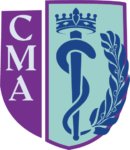We are in the Labor Day weekend which marks the unofficial end of the summer. Our children are back in school, and most adults will be turning to their indoor entertaining and work activities. Employers have been encouraging a return to in-office work. All of these reflect a diminution of social distancing and indoor proximity to one another. These changes of venue have driven past USA autumn COVID-19 spikes and predictions are that this trend will continue. Adding the expected increases atop the ongoing 84,000 daily cases, 5,000 daily hospitalizations, and 407 daily SARS-CoV-2 deaths, it is easy to see the cause for concern.
In anticipation of the fall surge, the pharmaceutical companies and the FDA have been working feverishly, with due safe and scientific speed, to update vaccines in response to the dominant variants. Both Pfizer- BioNTech and Moderna have added mRNA which codes specifically for a portion of the spike protein found in common on the BA.4 and BA.5 subvariants of the Omicron variant. The terminology for this new formulation can be confusing as it is referred to as “bivalent” and also as an “updated booster.” The bottom line is that these new boosters, which have been given Emergency Use Authorization (EUA) by our Food and Drug Administration (FDA), also contain the mRNA which was found in the originally approved vaccines. Thus, there is double protection. The clinical trials and studies have shown them to combat the original strain responsible for COVID-19 as well as the currently dominant strains and variants.
According to the new CDC guidelines this new Moderna COVID-19 Vaccine, Bivalent, has EUA for people 18 years of age and older. It is to be administered no sooner than two months after completion of the primary series of the original Moderna. That original vaccine, which is referred to as monovalent, is still used as a two-shot, four weeks apart series for those who have never been vaccinated. A person in this age group who has been vaccinated and boosted must wait two months after their primary series completion or last booster before receiving this updated (aka bivalent) booster.
There is a significant difference with how the new Pfizer BioNTech Covid-19 Vaccine, Bivalent is utilized. It has been given EUA for ages 12 and older. It too is to be administered no sooner than two months after the completion of a primary series or monovalent booster. Note that the Pfizer primary series is two monovalent injections, no sooner than three (3) weeks apart. Essentially, the new Pfizer can be used in adolescents and teenagers whereas the new Moderna does not have EUA as of yet. Just as we experienced with the expanding age groups eligible for the original monovalent vaccines, the same is expected with these bivalent vaccines. Younger age groups will likely be able to benefit from these new protections as time goes on.
Another change in the guidelines is that for the twelve and older age group only one of the two new bivalent vaccines is to be used as a booster going forward. The approval for the monovalent vaccines to be used as a booster for these individuals is now rescinded by the FDA. It is extremely important to reiterate that the original monovalent Pfizer BioNTech and Moderna vaccines are still approved for administration as a primary series for individuals 6 months of age and older. Additionally, the original Pfizer BioNTech vaccine is authorized as a single dose booster, at least five months after completing the primary Pfizer BioNTech series, for individuals ages 5-11 years of age.
Safety and effectiveness are the hallmarks of a beneficial medical therapeutic. The updated vaccines have been found to meet both benchmarks. They have effectively lessened severe illness, hospitalizations, and deaths. The most commonly reported side effects have been pain, redness, or swelling at the injection site; headache, fatigue, fever, or joint pain.
As we transition back to indoor activities, there is now a new tool in the armamentarium to fight this omnipresent disease. Currently, Hamilton is at a LOW, and surrounding counties are at LOW to MEDIUM community levels of COVID-19. This is likely to change soon. Get your updated booster NOW to protect yourself and those around you.
Clyde E. Henderson, MD
Cincinnati Medical Association

